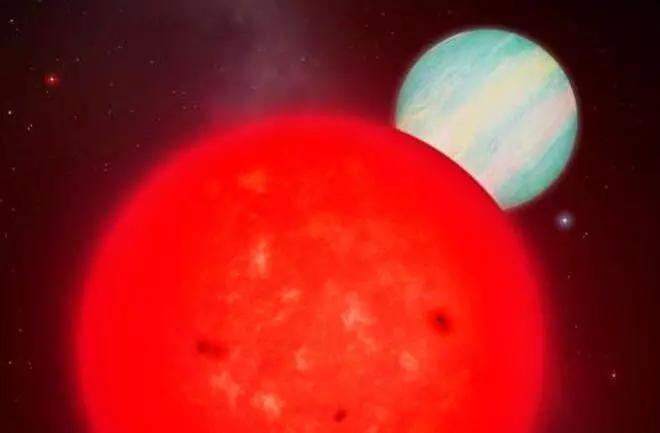Giant Planet Orbiting Small Star Challenges Planet Formation Theories
Astronomers discover giant planet TOI-6894b orbiting a tiny star, challenging planet formation theories and offering new insights with JWST observations.
image for illustrative purpose

Astronomers are intrigued by a recent discovery of a massive planet, TOI-6894b, orbiting a tiny red dwarf star just 238 light-years from Earth. What puzzles scientists is the planet’s size compared to its star, which is only about 20% the mass of our Sun. Traditionally, small stars are thought to have less material in their surrounding discs, limiting the formation of large planets.
Astrophysicists explain that young stars are surrounded by discs of gas and dust, which form planets. Typically, bigger stars have more massive discs, while smaller stars have lighter discs, making the existence of a giant planet around a small star surprising.
This isn't the first time such a phenomenon has been observed. In 2023, a Neptune-sized planet was found orbiting a star with one-ninth the Sun’s mass. However, planets of this size usually orbit far from their small stars, where more material is available. TOI-6894b’s close orbit adds a new twist.
Scientists propose several theories for TOI-6894b’s formation. One suggests gravitational disc instability, where fragments in the star’s disc collapse to form a planet. Another theory is that the planet formed farther out and migrated inward due to loss of angular momentum—possibly caused by interactions with a companion star or the disc itself. A third possibility involves gravitational interactions among multiple planets pushing one closer to the star.
The discovery opens up exciting opportunities for study, especially with the James Webb Space Telescope (JWST). When TOI-6894b transits its star, it blocks about 17% of the star’s light—a much larger dip than typical giant planets—indicating a potentially vast atmosphere. JWST observations could reveal the planet’s atmospheric composition, offering deeper insights into planet formation processes.
While the finding doesn’t overturn existing models, it highlights gaps in understanding how planetary systems develop around low-mass stars. Researchers see TOI-6894 as a valuable benchmark for future exploration of planet formation in varied cosmic environments.

